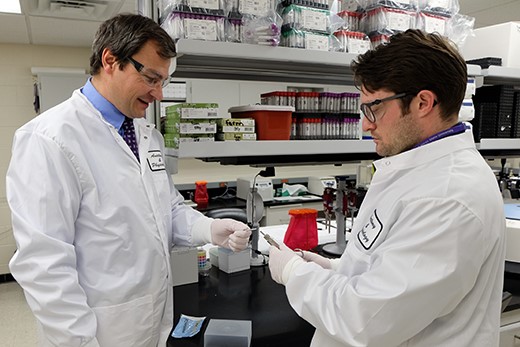Bovine anaplasmosis, caused by blood-borne parasite, is most prevalent tick-transmitted disease of cattle worldwide.
February 24, 2020

Researchers at the Kansas State University College of Veterinary Medicine, in collaboration with Iowa State University, have developed a new vaccine delivery platform to produce long-lasting protection against anaplasmosis infections in cattle.
Bovine anaplasmosis, caused by the blood-borne parasite Anaplasma marginale, is the most prevalent tick-transmitted disease of cattle worldwide and causes significant disease loss to beef producers in the U.S., Kansas State said.
"Currently, a common strategy to control anaplasmosis is to provide mineral or feed containing the antibiotic chlortetracycline to cattle on pasture," said Andrew Curtis, doctoral research assistant in the laboratory of Hans Coetzee, professor and head of the anatomy and physiology department in the Kansas State College of Veterinary Medicine.
"This practice has raised concerns about the potential emergence of antimicrobial resistance in bacteria that may pose a risk to human and animal health," Curtis said. "Although there is an experimental vaccine available to control anaplasmosis, it requires multiple injections and it has not been evaluated in published research studies."
The objective of the new study was to develop a single-dose implant vaccine platform that provides long-term immunity against anaplasmosis infections by releasing vaccine contents over an extended period, the announcement said.
This new single-dose vaccine, which is administered in the back of the ear, has been shown to protect against clinical anaplasmosis for up to two years and could potentially help make anaplasmosis control more accessible and convenient to livestock producers, Curtis said.
“The concept of providing cattle with a single vaccine implant that could potentially provide lifelong protection against an economically devastating disease such as bovine anaplasmosis could revolutionize livestock production,” Coetzee added.
Iowa State University currently holds a patent for the implant platform, and the K-State/Manhattan Innovation Center is exploring a partnership with Iowa State to further develop this technology, the announcement said.
The first step to a commercially available product would include finding a commercial partner to seek approval from the U.S. Department of Agriculture.
In addition to Curtis and Coetzee, Kansas State researchers involved with the project include Miriam Martin, Brandt Skinner, Shawnee Montgomery, Tippawan Anantatat, Kathryn E. Reif, Majid Jaberi-Douraki, Emily J. Reppert and Michael Kleinhenz. Researchers from Iowa State include Sean Kelly, Balaji Narasimhan and Douglas Jones.
This project was supported in part by the Iowa Livestock Health Advisory Council, and the faculty startup funding was provided by Kansas State University.
The study, "Rapid Communication: Development of a Subcutaneous Ear Implant to Deliver an Anaplasmosis Vaccine to Dairy Steers," was published in the Journal of Animal Science.
You May Also Like
.png?width=300&auto=webp&quality=80&disable=upscale)


